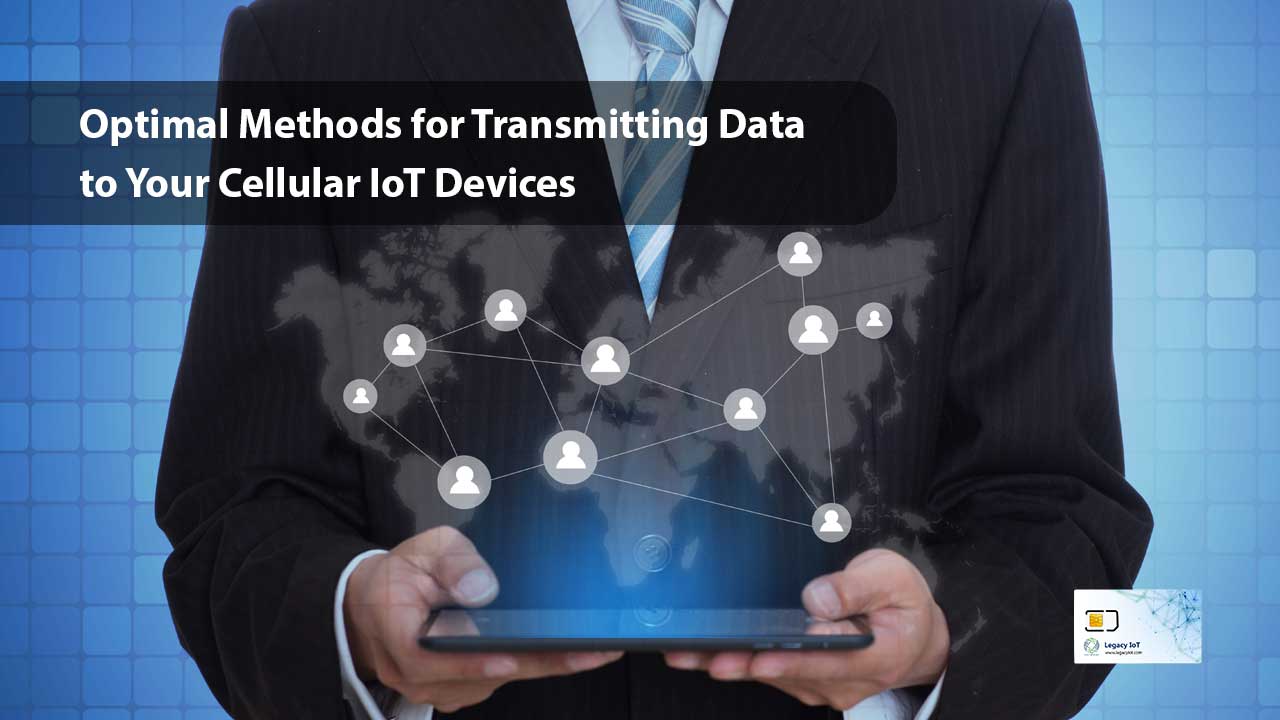In today’s interconnected world, Cellular Internet of Things (IoT) devices have become an integral part of various industries, from agriculture and healthcare to manufacturing and logistics. These devices enable real-time data monitoring, remote control, and automation, transforming how businesses operate.

However, for IoT systems to function efficiently, choosing the right method for transmitting data to cellular IoT devices is crucial. In this comprehensive guide, we will explore various optimal methods for transmitting data to your cellular IoT devices, ensuring seamless connectivity, data integrity, and cost-efficiency.
1. Cellular Connectivity Basics
Before diving into the methods, it’s essential to understand the basics of cellular connectivity. Cellular IoT devices rely on mobile networks, such as 4G LTE and 5G, to transmit data. These networks offer wide coverage and robust connectivity, making them ideal for the internet of things and their applications. Cellular networks use SIM cards to authenticate and connect devices to the internet, allowing them to transmit and receive data packets.
2. MQTT Protocol for Efficient Data Transmission
One of the most popular and efficient methods for transmitting data to cellular IoT devices is using the Message Queuing Telemetry Transport (MQTT) protocol. MQTT is a lightweight, publish-subscribe messaging protocol that minimizes data overhead and conserves battery life in IoT devices.
With MQTT, cellular IoT devices can subscribe to specific topics and receive data updates only when relevant information is available. This reduces unnecessary data transmission, leading to lower data costs and increased device efficiency. MQTT’s QoS (Quality of Service) levels ensure data integrity, making it an excellent choice for mission-critical IoT applications.
3. CoAP for Resource-Constrained Devices
For resource-constrained cellular IoT devices, the Constrained Application Protocol (CoAP) is a viable option. CoAP is designed to work efficiently in low-power, memory-constrained devices, making it suitable for applications like environmental monitoring and smart agriculture.
CoAP uses a request-response model, similar to HTTP, allowing IoT devices to retrieve data from servers while minimizing power consumption. Additionally, CoAP supports message compression, reducing the size of data packets sent over cellular networks and optimizing data transmission for small-scale IoT devices.
4. HTTP/HTTPS for Web-Based Applications
If your cellular IoT application is web-based or requires communication with web servers, using HTTP or its secure counterpart, HTTPS, may be the optimal choice. These protocols are widely supported and easy to implement, making them suitable for applications that need to retrieve data from web services or push data to cloud platforms.
HTTP/HTTPS ensures data security and authentication, which is essential for IoT applications that involve sensitive information. However, it’s important to note that these protocols may introduce more significant data overhead compared to MQTT or CoAP, potentially affecting data costs and device battery life.
5. LoRaWAN for Long-Range, Low-Power Applications
In scenarios where long-range communication and minimal power consumption are essential, the Low-Rank Wide Area Network (LoRaWAN) protocol shines. LoRaWAN is designed for low-power, long-range IoT devices, making it ideal for applications like smart city infrastructure and asset tracking.
This protocol operates in the sub-gigahertz ISM bands, offering exceptional signal penetration and long-range communication. LoRaWAN’s low power requirements allow IoT devices to operate on batteries for extended periods, reducing maintenance and operational costs. However, LoRaWAN may not be suitable for applications requiring high data rates or real-time communication.
6. Edge Computing for Reduced Data Traffic
Edge computing is a strategy that can significantly optimize data transmission for cellular IoT devices. Instead of sending all data to the cloud, edge devices process and filter data locally, sending only relevant information to the cloud or central server. This reduces data traffic over cellular networks and minimizes latency.
Edge computing is particularly valuable in applications that require real-time processing, such as autonomous vehicles and industrial automation. By analyzing and filtering data at the edge, IoT devices can respond quickly to changing conditions, improving overall system efficiency.
7. Data Compression and Aggregation
To further optimize data transmission to cellular IoT devices, consider implementing data compression and aggregation techniques. Data compression reduces the size of data packets, lowering data costs and improving transmission speed. Aggregation involves bundling multiple data points into a single packet, reducing the number of individual transmissions and conserving bandwidth.
These techniques are especially beneficial for applications with limited data plans or those operating in remote areas with limited cellular coverage. By optimizing data packets, you can ensure that your cellular IoT devices operate efficiently and cost-effectively.
8. Choosing the Right Network Provider
Selecting the right cellular network provider is crucial for ensuring optimal data transmission to your IoT devices. Different providers offer varying levels of coverage, reliability, and pricing. It’s essential to assess your IoT project’s geographical location and data requirements to choose a provider that meets your specific needs.
Additionally, some network providers offer specialized IoT connectivity solutions, such as narrowband IoT (NB-IoT) or LTE-M, designed explicitly for low-power, low-data-rate IoT applications. These options can be more cost-effective and efficient for certain IoT use cases.
Conclusion
In the ever-expanding world of cellular IoT devices, choosing the optimal method for transmitting data is paramount to the success of your IoT project. Whether you prioritize efficiency, low power consumption, or web-based communication, there is a method that suits your specific needs.
Remember that the right choice may involve a combination of methods, depending on your application’s requirements. Legacy IoT provides best IoT Service Worldwide at affordable prices by understanding the fundamentals of cellular connectivity and considering the unique characteristics of your IoT devices, you can ensure seamless data transmission, reduced costs, and improved overall efficiency in your IoT ecosystem. Stay up-to-date with advancements in IoT technology to continue optimizing your data transmission methods and stay ahead in the rapidly evolving IoT landscape.





